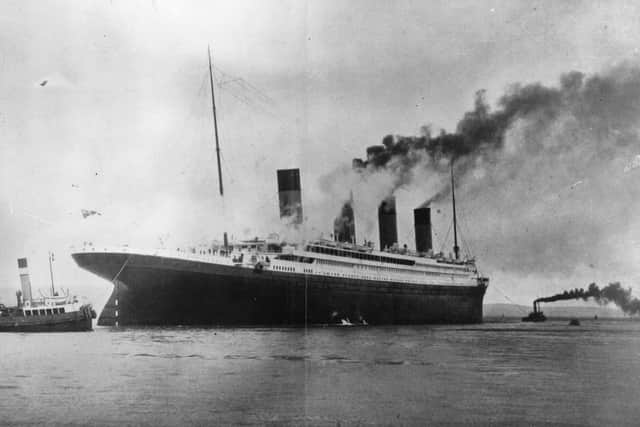Titanic: what happened to the people onboard the ship? Were they ever recovered?
and live on Freeview channel 276
The RMS Titanic sank in the early hours of 15 April 1912, just off the coast of Newfoundland in the North Atlantic after hitting an iceberg during its maiden voyage. Of 2,240 passengers and crew on board, over 1,500 lost their lives.
The unsinkable ship sank four days into its voyage from Southampton to New York. It was the largest ocean liner at the time and took over 2 hours and 40 minutes to sink.
Advertisement
Hide AdAdvertisement
Hide AdSo what happened to the passengers of the Titanic? Here is what you need to know.
Who were the passengers of the Titanic?
When the Titanic sank, 1,503 people lost their lives. The passengers were separated into classes determined by the price of their tickets. People in the first class were a "who's who" of the prominent class in 1912, where a single-person berth in the first class cost between £30 (which is equivalent to £3,200 in 2021) and £870 (equivalent to £92,000 in 2021) for a parlour suite and small private promenade deck.
Some members of the British aristocracy made the trip, such as The Countess of Rothes, a member of the Gracie family, Archibald Gracie IV and Lord Pirrie. Other prominent were American socialites and multimillionaire Colonel John Jacob Astor IV, who was one of the richest men in the world.


Other famous names include philanthropist and women's rights activist Margaret Brown, tennis star and banker Karl Behr, and famous American silent film actress Dorothy Gibson.
Advertisement
Hide AdAdvertisement
Hide AdIn the second class, there were leisure tourists, academics, members of the clergy and middle-class English, Scottish and American families. The average ticket was £13, which is around £1,400 in 2021. Father Byles, who performed blessings and last rites for those trapped, was travelling in second class.
Third-class passengers paid £7, which is equivalent to £700 in 2021, for their ticket, which also included the price of rail travel to the three departure points.
People in the third class were those seeking a new life and were made up of a diverse group of nationalities and ethnic groups.
The youngest passenger on board the ship, 2-month-old Millvina Dean, who with her parents Bertram Sr. and Eva Dean and older brother Bertram, was emigrating from England to Kansas, died in 2009. She was the last survivor of the Titanic disaster to die.
What happened to the people on the Titanic when the boat hit an iceberg?
Advertisement
Hide AdAdvertisement
Hide AdAt around 11.40pm on 14 April 1912, the Titanic hit an iceberg and began to sink. Captain Edward Smith ordered the ship's lifeboats to be readied and a distress call was sent out.
The nearest ship was Cunard Line, Carpathia, 93km away - which came an estimated four hours later. After 45 minutes, Captain Smith ordered the lifeboats to be loaded and lowered under the orders of women and children first.
In the first lifeboat, 28 people were on board out of a capacity of 65. As lifeboats were deployed people were arguing to go back and rescue people floating in the water. At 2:20 am, the Titanic itself sank. By 4.10am Carpathia arrived and picked up survivors.
Many survivors died later due to complications because of the sinking and a full passenger list can be found here.
Advertisement
Hide AdAdvertisement
Hide AdIn the days after the sinking, several ships sailed to where the disaster occurred to recover victims' bodies, which were around 330 bodies. The White Star Line, the company that created the Titanic, charted cable ships to retrieve bodies, as well as lighthouse ships and sealing vessels all equipped with embalming supplies, undertakers and clergy, however, many people were buried at sea, and around 150 bodies were never claimed.
Comment Guidelines
National World encourages reader discussion on our stories. User feedback, insights and back-and-forth exchanges add a rich layer of context to reporting. Please review our Community Guidelines before commenting.
